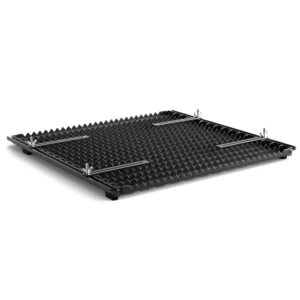aluminum honeycomb panels
Aluminum honeycomb panels are used for a wide range of applications, including curtain walls, cladding, elevator panels and roof ceilings. Their popularity stems from their light weight, strength to density ratio and rigidity. In addition, they are highly flexible and can be formed into complex 3D shapes. They can also be machined to fit the specifications of any project. They are corrosion resistant, have good fire performance, high ductility and can withstand high tensile stresses.
The unique hexagonal structure of these lightweight honeycomb panels allows them to withstand extreme environments and provide better load-carrying capacities than standard laminates. The structure distributes force evenly, enabling it to withstand both high winds and earthquakes. In addition, the honeycomb core can be designed with various cell shapes and foil thicknesses to meet specific design requirements. Additionally, honeycomb panels are highly resistant to moisture and fungus, which is critical for enclosed environments such as aircraft cabins.

In addition to their structural and safety advantages, aluminum honeycomb panels are also environmentally friendly and cost-effective. They are non-toxic, recyclable and do not release volatile organic compounds into the air. These attributes make them a perfect choice for eco-friendly construction projects. They can be a viable alternative to other materials such as wood, fiberglass and plastic, which are often not as environmentally friendly.
What are aluminum honeycomb panels commonly used for?
An aluminum honeycomb panel is a sandwich panel consisting of two aluminum plates that are firmly adhered to an aluminum honeycomb core material. This core is then bonded to the outer surface of the aluminum plate by using a special composite process. The resulting sandwich panel is extremely durable and can be used in all types of weather conditions. It can even be made to withstand temperature fluctuations and shear, which is important in aerospace applications.
KCP’s film-bonded aluminum honeycomb panels can be formed into a variety of shapes and sizes to meet your specific design requirements. They can also be customized to include any type of aluminum honeycomb core material, such as alumina or Nomex. Nomex is a type of meta-aramid paper that is created from thermosetting phenolic resin. This paper has advanced strength with a fire rating of FR grade A+. It is also non-combustible, meaning that it does not melt or drip, and therefore is highly resistant to fire.
The global market for aluminum honeycomb panels is growing at a healthy rate. This growth can be attributed to the expansion of automotive, aviation, marine and construction industries across developing countries. The demand for environment-friendly materials is also increasing, and this will drive the global market. The Asia-Pacific region is expected to lead the global market, due to the rapid development of these industries in this area.